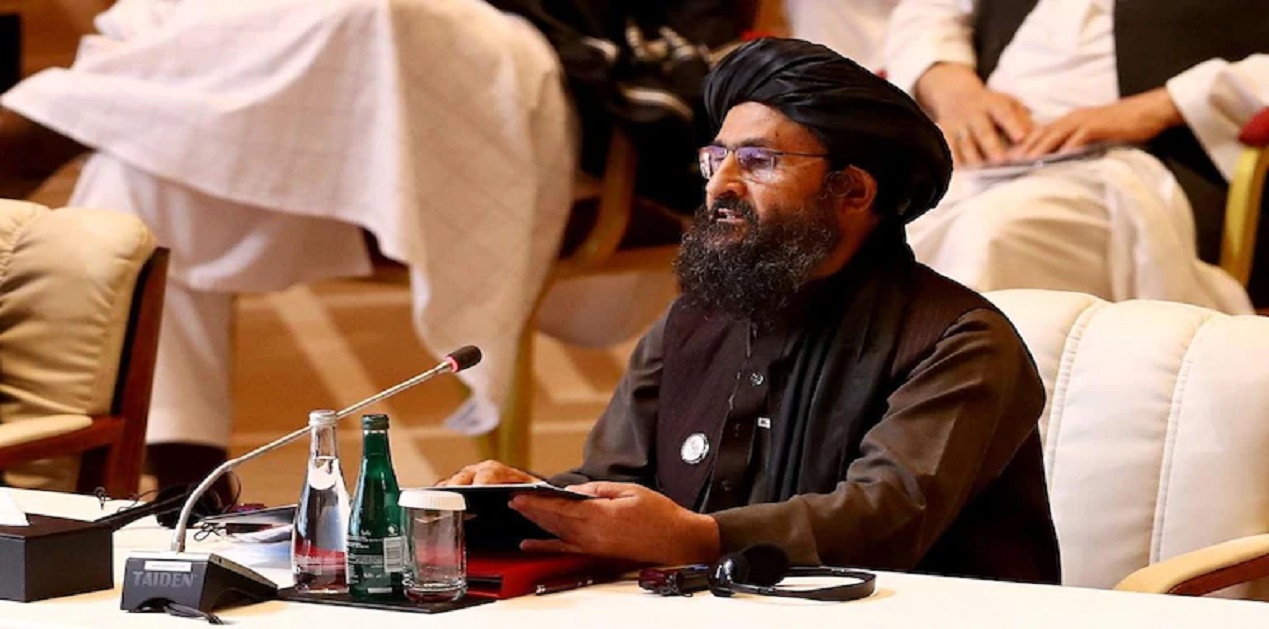(Given below is a report on Brainstorming Session held on 13 September 2021 at the VIF attended by Dr. Arvind Gupta, Lt. Gen Ravi Sawhney, Amb. Gautam Mukhopadhyay, Mr. Tilak Devasher, Dr.Srikanth Kondapalli, Lt. Gen. Rakesh Sharma, Mr. Satish Chandra, Vice Adm. Satish Soni, Air Marshal D. Choudhury, Amb. Amar Sinha, Air Marshal G. Luthra, Amb. PS Raghavan, Dr. Rudra Chaudhury, Amb. Sanjay Singh, Amb. DP Srivastava, Amb. Trigunayat and Amb. Anil Wadhwa)
USA’s hasty troop withdrawal from Afghanistan and the subsequent Taliban takeover in Kabul has sent shockwaves throughout the world. The situation in Afghanistan remains uncertain and chaotic. Contrary to the fundamental military dictum of “keeping one leg on the ground the situation in Afghanistan is of both legs in the air-with no safe place to land”. Media is awash with analysis and speculations over the dramatic pace of events, from the domino effect of falling provincial capitals and Kabul, the near-total absence of resistance by the Afghan National Defence and Security forces (ANDSF), the sudden US abandoning of Bagram, the chaotic evacuation againsta stringent time-line imposed by Taliban, the bomb blasts resulting in loss of lives, including US combatants, and the targeted counter-drone strikes by the US.
Hence to understand the complex developments in Afghanistan and its impact on India, Vivekananda International Foundation organized a virtual discussion on 13th September 2021. Discussants brainstormed on various issues such as the fragmented structure of the Taliban government, the geopolitical and the geo-economic power play in Afghanistan between the regional players (Pakistan, China and Russia) and the Western powers and options for India to engage in Afghanistan.
Since the Taliban has wrested power it has been building a narrative of a “moderate Taliban” to gain recognition from international community. The messaging has been focussed on amnesty, community reconciliation, stability and reconstruction. Taliban spokespersons had made number of statements indicating formation of an “inclusive,” administration. However, Taliban has formed an overwhelming ethnic, all-male government which is anything but inclusive. A large number of its members are on the UN global list of terrorists. Hence Taliban regime that has come to power is not legitimate. There seems to be clear understanding by now that Taliban 2.0 has not changed its extremist and medieval ideology. However, Taliban after taking over the reins of power in Kabul is facing an identity crisis. It will face governance challenges in future as the infighting in Taliban continues. The future looks all the more dodgy as Afghanistan faces a looming financial and humanitarian crisis. Further the possibility of resistance cannot be ruled out despite the fact resistance based out of Panjshir valley seems to have been overcome for the time being.
The return of Taliban will have ripple effects, demonstration effects and inspirational effects all across the world. It will give a huge fillip to Islamic radicalism including regional and international extremist Islamist groups. It will embolden Islamist terror organisations and there is likely to be a resurgence of AQ, ISKP in Afghanistan and the relocation of LeT, JeM there. Global and regional powers have political and economic stakes in the ongoing conflict in Afghanistan. They also fear the spillover effects from the instability in Afghanistan.
A sense of triumphalism prevails in Pakistan as the military has achieved its cherished goal of ‘strategic depth’. It paints the current picture in Afghanistan as a defeat of India. Imran Khan described Taliban takeover of Afghanistan as Afghans breaking from the ‘shackles of slavery’. Though a narrative is also being built where in Pakistan is playing a victim card. They are painting themselves as being left to fend for themselves after the withdrawal of U.S. troops, and that they are going to be bearing the brunt of the chaos and civil war in Afghanistan. However the fact is that Taliban has maintained close contacts with Pakistan and is hundred percent a Pakistan project. Islamabad has assisted the Afghan Taliban for three decades to seize power and attack India’s generous efforts to support and empower Afghan people. On the other hand there are also concerns in Pakistan especially on the internal front, as with fallout of extremist ideology there will be resurgence of Tehrik-i-Taliban (TTP). TTP has already intensified its attacks on the various Chinese projects in Pakistan. There is also concern over the risks of blowback and the catalyzing of Pashtun nationalism across the Durand line.
In the US, National Congress is now putting pressure to increase the aid budget to Afghanistan. With Mid-Term elections due in the US Biden’s agenda might be hijacked depending upon its outcome. Despite the nature of American withdrawal from Afghanistan its credibility with allies like Korea, Japan and others might not be affected though such a withdrawal has created some frictions with its European allies. There are also apprehensions that the American aid might be routed through/ outsourced to Pakistan that is something which needs to be watched as Pakistan has hardly been an honest broker. There is also a view that the US will adopt a bipolar approach to Afghanistan where India will be kept out of Afghanistan while forging Us-India bilateral ties in Indo-Pacific arena. This way Pakistan will continue to remain important to the US.
China sees an opportunity in Afghanistan and is tempted by United States withdrawal and Taliban takeover. Hence diplomatically high-level engagements with Taliban continue. China had maintained contacts with Mullah Omar and also with Hekmatyar group. In fact, Beijing has maintained contacts with several factions of the Taliban. A Chinese spy ring reportedly linked with Haqqani Network was busted by the previous Afghan government; China is now likely to seek cooperation with the Taliban on intelligence matters with a view to exercise influence. Primarily China’s interests are related to protecting its citizens in Afghanistan, stabilising its border areas in the Wakhan corridor in Badakhshan province, which has recently witnessed a resurgence of the Taliban, curbing the drugs and small arms trade from Afghanistan, containing the spill-over of Uighurs trained by the Al-Qaeda or the Islamic State-Khorasan and its effect on stability in Xinjiang province. It is however highly concerned about links of the East Turkmenistan Islamic Movement (ETIM) with Taliban. It is also worth noting that Chinese supplied drones and JF-17 jetfighters of Pakistan were used in the Battle of Panjshir in support of the Taliban.
China also has economic interests in the shape of exploitation of the mineral wealth of Afghanistan and in extending the framework of its BRI projects to Afghanistan. Due to instability in Afghanistan and several other contextual factors there will be difficulties in achieving progress in these areas. At a larger level China’s priority is to maintain regional dominance and balance India through propping up of Pakistan. As part of its strategic outreach China has put together a Himalayan Quad comprising of Afghanistan, Pakistan and Nepal.
Russia is hedging its bets in Afghanistan; there remains confusion onhow to proceed to best promote its interests. Russia has not yet recognised the Taliban regime. It is mainly concerned about spread of extremist philosophy from Afghanistan to Central Asia. This has resulted in Russia taking preemptive measures holding a joint military exercise with Uzbekistan close to Uzbekistan’s border with Afghanistan. Russia and Uzbekistan have held a military exercise with Tajikistan.
Afghanistan's Central Asian neighbours Uzbekistan, Tajikistan and Turkmenistan have different stances on the Taliban takeover of Afghanistan. Uzbekistan and Turkmenistan held high-level talks with the Taliban and are likely to recognise Taliban rule, while Tajikistan has not engaged with the militants. Tajikistan has adopted a tough stance against the Taliban government and has also given its support to the resistance movement in Afghanistan.
Iran had welcomed American departure from the region, however it seems upset after the Taliban announced interim government. Iran has stated that Afghanistan should establish a broad and inclusive government reflecting the interests of all ethnic groups in the country.
However the change of regime in Afghanistan poses a long-term challenge for India. India should expect a rise in terrorism and radicalism and prepare accordingly. There are grass root concerns about the fallout of the situation in Afghanistan on the internal security situation in India, particularly in Jammu and Kashmir, Punjab and the hinterland. India will need to wait and watch the situation before taking long-term decisions.
India needs to arrive at a coherent and consistent strategic approach that will guide its policies in the near andmidterm. The geopolitical churning in the region would also impact India’s bilateral ties with China, Pakistan, Iran, and the U.S. With regards to Afghanistan India should continue its people-to-people relationship through humanitarian aid. It should focus on the small things- engagement on the education and medical front, reassuring the Afghan students in India etc. Further India should ramp up its efforts to induce west to impose sanctions on Pakistan. Both at the diplomatic and the track two levels India should develop a narrative of Pakistan’s role in supporting Taliban. India should also recalibrate its policies by enhancing collaboration and cooperation with regional countries like Iran and Tajikistan.
Taliban takeover of Afghanistan will have huge global and regional ramifications. With Pakistan becoming the frontline state, it will give a huge boost to global and jihadist terrorism. International community should embolden its stance by questioning the legitimacy of Taliban regime and also acknowledge the Pakistan role in the current crisis. Overall, the security situation will continue to be precarious and the future of Afghanistan hangs in balance, as there remain myriad uncertainties and complexities.
(The paper is the author’s individual scholastic articulation. The author certifies that the article/paper is original in content, unpublished and it has not been submitted for publication/web upload elsewhere, and that the facts and figures quoted are duly referenced, as needed, and are believed to be correct). (The paper does not necessarily represent the organisational stance... More >>
Image Source: https://akm-img-a-in.tosshub.com/indiatoday/images/story/202109/CKSIVAUGGJJ3FGNZW32PGPK5JI_1_1200x768.jpeg?96mKivSUjg4DUJp6IOhVRkvWb1ByHq62&size=770:433












Post new comment